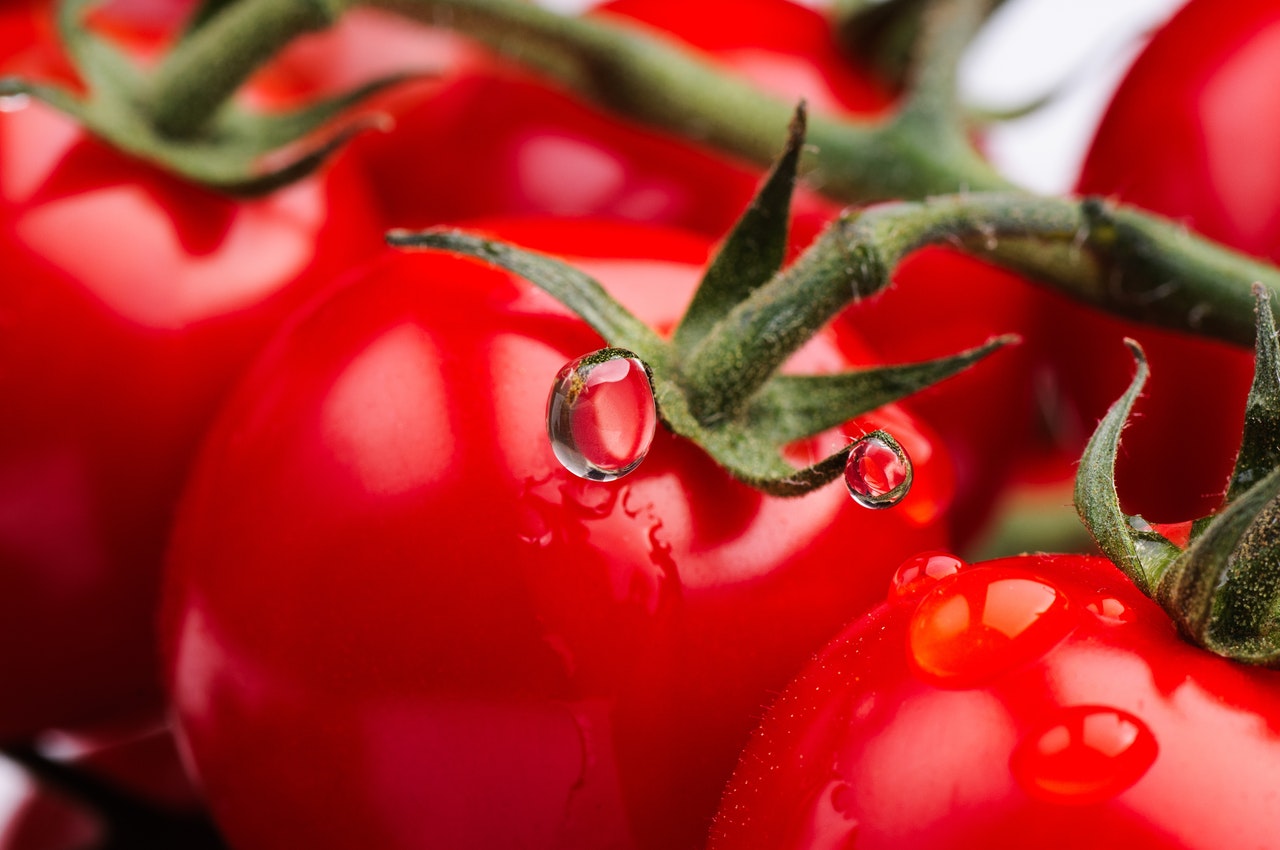Tomatoes are originally from Peru (the Andes) and were cultivated by the Aztecs in Mexico. The name “tomato” in many languages comes from the Aztec word “tomatl,” meaning “plump fruit.” Tomatoes, along with corn, potatoes, sweet potatoes, and chili peppers, were brought to Spain by Columbus in the early 16th century.
The tomato (Solanum lycopersicum L.) most likely first arrived in Seville, the main trading center of that time. Dodoens, a Danish herbalist, described tomatoes in detail and gave them a reputation as an aphrodisiac. This explains the name “pomme d’amour” in French, “pomodoro” in Italian, and “love apple” in English. Europeans were initially hesitant to accept tomatoes due to the unpleasant smell of their leaves and stems, and some even considered them poisonous.
While the stems and leaves are toxic, tomato fruits are among the most edible vegetables. Tomatoes are an annual vegetable plant with red, juicy fruits that occupy an unusual position between vegetables and fruits.
Nutritional Value of Tomatoes
Today, tomatoes are widely used as a food ingredient, with thousands of dishes featuring tomatoes as the main component. Tomato fruits are present in all cuisines worldwide. In the processing industry, they are a primary raw material; they are processed into juices, concentrates, and peeled tomatoes, while green fruits can be pickled. Due to their nutritional value, tomatoes have a very favorable effect on the health of the human body.
The energy value of tomatoes is 18 kcal/100 g of fresh fruit.
Green tomato fruits contain solanine, a toxic glycoalkaloid specific to plants in the Solanaceae family, which protects the plant from pests. Solanine is present in all parts of the plant. As tomatoes ripen, solanine breaks down, and thermal processing reduces its stability.
An important component of tomato fruit is lycopene (a carotenoid that, along with xanthophyll and carotene, gives the red color). Lycopene is a natural antioxidant and regulates cell growth. It is the primary carotenoid in human blood and tissues. Tomatoes and their products are the main source of lycopene in the human diet. Thermal processing increases its bioactivity, so tomato juice contains 150 mg/l, while fresh tomatoes have a lycopene content of 30 mg/kg.
Table 1: Nutritional Value of Fresh Tomatoes
| Nutrients | Amount (%) |
|---|---|
| Raw Proteins | 0.4 – 1.25 |
| Raw Fats | 0.2 – 0.95 |
| Carbohydrates | 1.87 – 9.0 |
| of which Sugars | 2.4 – 7 |
| Fibers | 0.31 – 1.8 |
| Minerals | 0.6 |
| Water | 92.0 – 95.0 |
Table 2: Mineral Composition of Tomatoes
| Minerals | Amount (mg/100 g fresh fruit) |
|---|---|
| Sodium | 2.6 – 32.7 |
| Potassium | 92 – 376 |
| Magnesium | 13 – 20 |
| Calcium | 10 – 21 |
| Phosphorus | 7 – 53 |
| Iron | 0.4 – 1.2 |
| Sulfur | 13 – 20 |
Table 3: Vitamin Content in Tomato Fruit
| Vitamins | Amount (mg/100 g fresh fruit) |
|---|---|
| Carotene | 0.15 – 2.3 |
| Vitamin E | 0.36 |
| Vitamin K | 0.4 – 0.8 |
| Vitamin B1 (Thiamine) | 0.016 – 0.08 |
| Vitamin B2 (Riboflavin) | 0.02 – 0.09 |
| Vitamin B3 (Niacin) | 0.3 – 0.85 |
| Vitamin B5 (Pantothenic acid) | 0.28 – 0.34 |
| Vitamin B6 | 0.074 – 0.15 |
| Biotin | 0.004 |
| Folic acid | 0.0086 |
| Vitamin C | 15 – 59 |













































